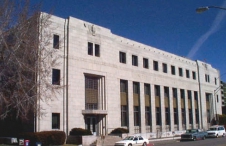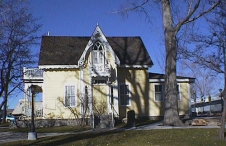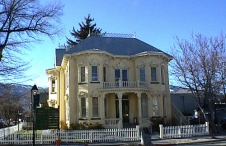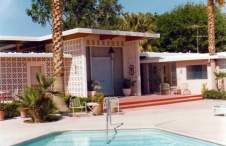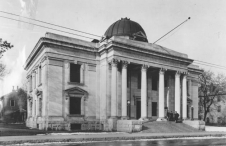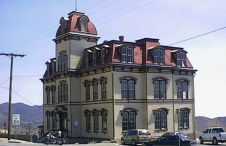Egyptian Revival Style Architecture in Nevada
Internationally, the first period of Egyptian Revival architecture sprang from Napoleon's Egyptian campaign of 1798-1799. During the early nineteenth century, there was widespread fascination with all things Egyptian. Motifs from that culture occasionally figured into building design, but the style remained an oddity until it fell out of fashion in the 1840s.
Occasionally Egyptian motifs appear in early Nevada architecture. Some early pilasters—iron half columns decorating the fronts of buildings—in Virginia City feature lotus flower capital letter forms as a nod to the Egyptian Revival movement. Similarly, the 1859 Winters mansion in Washoe Valley originally included slanted column door surrounds and a hearth frame, consistent with Egyptian inspiration.
A second period of Egyptian Revival occurred internationally in the 1920s with the discovery of Tutankhamen's tomb. Architectural historians have not identified Nevada examples from that period. A similar resurgence of Egyptian designs began in the 1980s with the touring King Tut exhibit. This period produced one of the nation's most monumental expressions of Egyptian Revival architecture in the hotel and casino, Luxor Las Vegas. In keeping with the exaggerated, lavish style of the Strip, the Luxor pyramid turns its back on traditional stone blocks, substituting black glass for sides and a powerful floodlight for a capstone.
Article Locations
Related Articles
Further Reading
None at this time.
